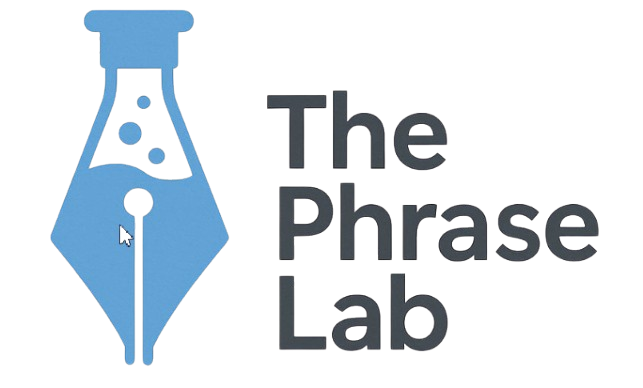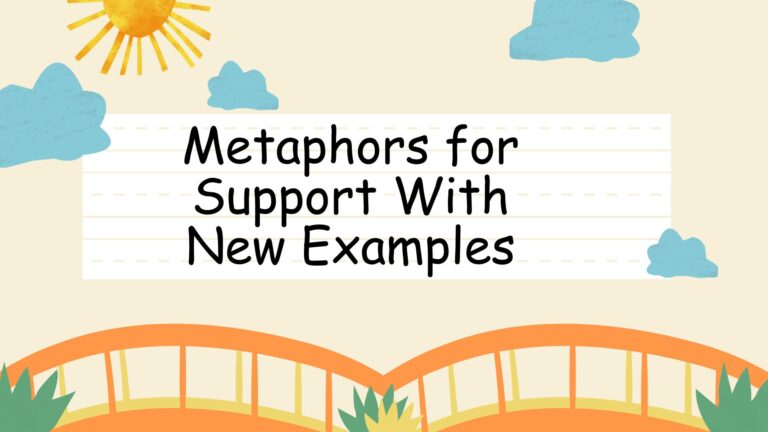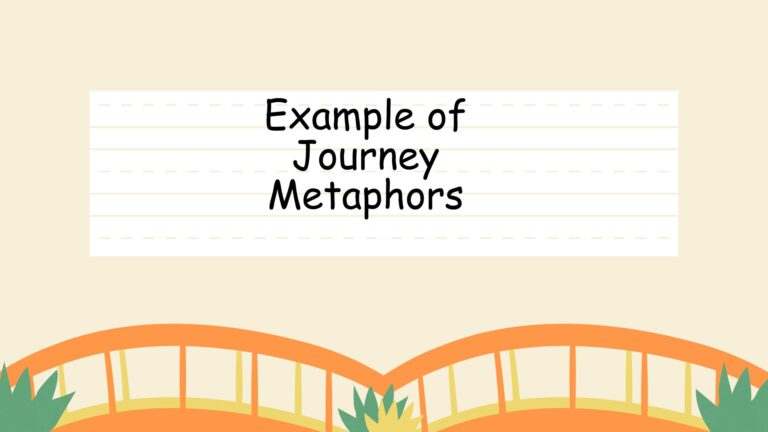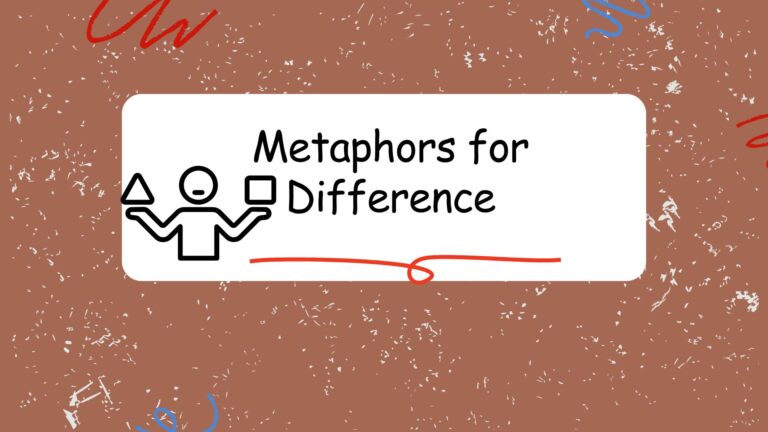
Metaphors for Joy: A Comprehensive Guide

Understanding metaphors is crucial for mastering English, as they add depth and color to our language. Metaphors for joy are particularly important because they allow us to express complex emotions in vivid and relatable ways. This article explores the various types of metaphors used to describe joy, their structural elements, and how to use them effectively. It is designed for English language learners of all levels, from beginners to advanced speakers, who want to enhance their understanding and use of figurative language.
Table of Contents
- Introduction
- Definition of Metaphor for Joy
- Structural Breakdown
- Types and Categories of Metaphors for Joy
- Examples of Metaphors for Joy
- Usage Rules
- Common Mistakes
- Practice Exercises
- Advanced Topics
- FAQ
- Conclusion
Definition of Metaphor for Joy
A metaphor is a figure of speech that directly compares two unrelated things, asserting that they are the same or alike. It’s a way of transferring qualities from one thing to another to create a more vivid and relatable image or feeling. A metaphor for joy, specifically, uses this comparison to describe the emotion of happiness or elation. It helps us understand and express joy in a more creative and impactful way.
The function of metaphors for joy is to evoke a deeper understanding and emotional connection to the feeling of joy. Instead of simply stating “I am happy,” a metaphor can paint a picture of joy as something bright, warm, or uplifting. This allows the listener or reader to experience the emotion more fully.
Metaphors for joy can be found in various contexts, including literature, poetry, everyday conversation, and song lyrics. They are used to add richness and nuance to descriptions of joyful experiences, making them more memorable and impactful. Understanding these metaphors allows us to better appreciate the emotional depth of the language we use and encounter.
Structural Breakdown
Metaphors consist of two main elements: the tenor and the vehicle. The tenor is the subject being described (in this case, joy), and the vehicle is the object or concept used to describe it. The vehicle carries the qualities that are being attributed to the tenor.
For example, in the metaphor “Joy is sunshine,” joy is the tenor, and sunshine is the vehicle. The qualities of sunshine (brightness, warmth, and life-giving energy) are being attributed to joy.
The structure of a metaphor can be explicit or implicit. An explicit metaphor directly states the comparison, often using words like “is,” “are,” “was,” or “were.” An implicit metaphor implies the comparison without directly stating it. For instance, “Her laughter sparkled” is an implicit metaphor because it suggests that her laughter has the qualities of something that sparkles, like light or jewels, thus conveying joy.
Understanding the structural elements of a metaphor helps in analyzing its meaning and appreciating its effectiveness. By identifying the tenor and vehicle, we can better understand the qualities being attributed to the subject and the overall impact of the metaphor.
Types and Categories of Metaphors for Joy
Metaphors for joy can be categorized based on the type of imagery they employ. Here are some common categories:
Light-Related Metaphors
Light-related metaphors use imagery of brightness, radiance, and illumination to describe joy. These metaphors often evoke feelings of clarity, optimism, and hope.
Warmth-Related Metaphors
Warmth-related metaphors use imagery of heat, comfort, and coziness to describe joy. These metaphors often evoke feelings of security, contentment, and affection.
Movement-Related Metaphors
Movement-related metaphors use imagery of upward motion, dance, and flight to describe joy. These metaphors often evoke feelings of freedom, excitement, and exhilaration.
Taste-Related Metaphors
Taste-related metaphors use imagery of sweetness, richness, and flavor to describe joy. These metaphors often evoke feelings of pleasure, satisfaction, and delight.
Sound-Related Metaphors
Sound-related metaphors use imagery of music, laughter, and harmonious sounds to describe joy. These metaphors often evoke feelings of harmony, celebration, and amusement.
Growth-Related Metaphors
Growth-related metaphors use imagery of blooming flowers, sprouting seeds, and flourishing plants to describe joy. These metaphors often evoke feelings of potential, renewal, and vitality.
Examples of Metaphors for Joy
This section provides extensive examples of metaphors for joy, categorized by the types discussed above. Each table includes a variety of examples to illustrate the different ways joy can be metaphorically expressed.
The following table showcases light-related metaphors for joy. These metaphors often associate joy with brightness and radiance, emphasizing its illuminating and uplifting qualities. They help convey the idea that joy, like light, can dispel darkness and bring clarity.
| Category | Metaphor | Explanation |
|---|---|---|
| Light-Related | Joy is sunshine. | Joy is like sunshine in its warmth and brightness. |
| Light-Related | Her smile was a beacon of joy. | Her smile radiated happiness like a guiding light. |
| Light-Related | Happiness sparkled in her eyes. | Her eyes shone with joy, like sparkling jewels. |
| Light-Related | His laughter illuminated the room. | His laughter filled the room with a sense of joy and brightness. |
| Light-Related | Joy is a ray of hope. | Joy brings hope and optimism, like a ray of light in darkness. |
| Light-Related | The news was a flash of brilliance. | The news brought sudden and intense joy. |
| Light-Related | Her heart glowed with happiness. | She felt a deep, inner joy that radiated outwards. |
| Light-Related | His spirit shone brightly. | He exuded joy and positivity. |
| Light-Related | Joy is the dawn after a long night. | Joy represents the beginning of a new, brighter period after hardship. |
| Light-Related | Her face lit up with joy. | Her expression showed immediate and radiant happiness. |
| Light-Related | Their happiness was a spotlight on the stage of life. | Their joy was prominent and noticeable. |
| Light-Related | Joy is a star in the darkness. | Joy provides guidance and hope when things are difficult. |
| Light-Related | Her eyes were filled with the light of joy. | Her happiness was clearly visible in her expression. |
| Light-Related | His presence was a sunbeam in the room. | He brought warmth and happiness to the environment. |
| Light-Related | Joy is the sparkle in a child’s eye. | Joy is pure and innocent, like the happiness of a child. |
| Light-Related | Her aura shimmered with joy. | She exuded a palpable sense of happiness and well-being. |
| Light-Related | The victory was a bright spark in their lives. | The victory brought a significant and memorable moment of joy. |
| Light-Related | Joy is a candle in the heart. | Joy provides warmth and light from within. |
| Light-Related | Her smile was a lantern in the dark. | Her smile offered comfort and guidance during a challenging time. |
| Light-Related | The laughter was a burst of sunlight. | The laughter was sudden, bright, and filled with joy. |
| Light-Related | His happiness was a lighthouse guiding them home. | His joy provided direction and safety. |
| Light-Related | Joy is the morning star, promising a new day. | Joy signals the beginning of something positive and hopeful. |
| Light-Related | Her spirit was a sun. | Her inner joy was radiant and powerful. |
| Light-Related | The moment was a bright spotlight. | The moment stood out as particularly joyful and memorable. |
| Light-Related | Joy is a firefly on a summer night. | Joy is fleeting and magical, like the light of a firefly. |
![]()
The following table illustrates warmth-related metaphors for joy. These metaphors connect joy to feelings of comfort, security, and affection, highlighting its nurturing and comforting aspects. They suggest that joy, like warmth, provides a sense of well-being and contentment.
| Category | Metaphor | Explanation |
|---|---|---|
| Warmth-Related | Joy is a warm blanket. | Joy provides comfort and security, like a warm blanket on a cold day. |
| Warmth-Related | Her love was a warm embrace. | Her love gave a sense of comfort and affection. |
| Warmth-Related | Happiness is a cozy fire. | Happiness provides warmth and comfort during difficult times. |
| Warmth-Related | His words were a warm cup of tea. | His words offered comfort and reassurance. |
| Warmth-Related | Joy is the warmth of a summer day. | Joy is pleasant and comforting, like the warmth of the sun. |
| Warmth-Related | Her presence was a hearth. | Her presence created a warm and welcoming atmosphere. |
| Warmth-Related | Joy is a hug from a loved one. | Joy provides a sense of connection and comfort. |
| Warmth-Related | His heart was a furnace of joy. | He felt a deep, intense sense of happiness. |
| Warmth-Related | Joy is a comforting hand on your shoulder. | Joy offers support and reassurance during challenging times. |
| Warmth-Related | Her laughter was a warm breeze. | Her laughter was gentle and comforting. |
| Warmth-Related | Their happiness was a warm family gathering. | Their joy was shared and comforting, like a close-knit family. |
| Warmth-Related | Joy is a soft, warm sweater. | Joy provides a sense of coziness and well-being. |
| Warmth-Related | Her voice was a warm fireplace. | Her voice was soothing and comforting. |
| Warmth-Related | His smile was a warm, sunny day. | His smile brought happiness and comfort. |
| Warmth-Related | Joy is the warmth of a loving embrace. | Joy is comforting and reassuring, like a hug from someone you love. |
| Warmth-Related | Her love was a warm, gentle rain. | Her love was refreshing and nurturing. |
| Warmth-Related | The memory was a warm, glowing ember. | The memory brought a comforting sense of joy. |
| Warmth-Related | Joy is a warm bath after a long day. | Joy provides relaxation and comfort. |
| Warmth-Related | Her words were a warm blanket on a cold night. | Her words offered solace and reassurance. |
| Warmth-Related | The feeling was a warm hug. | The feeling was comforting and pleasant. |
| Warmth-Related | His kindness was a warm, gentle breeze. | His kindness was comforting and pleasant. |
| Warmth-Related | Joy is the feeling of coming home. | Joy is a sense of belonging and comfort. |
| Warmth-Related | Her spirit was a warm, inviting fire. | Her spirit was welcoming and comforting. |
| Warmth-Related | The moment was a warm, comforting embrace. | The moment was filled with affection and security. |
| Warmth-Related | Joy is a warm smile from a friend. | Joy is comforting and reassuring. |
![]()
The table below presents movement-related metaphors for joy. These metaphors associate joy with upward motion, dance, and flight, emphasizing its liberating and exhilarating qualities. They suggest that joy, like movement, allows us to feel free and energized.
| Category | Metaphor | Explanation |
|---|---|---|
| Movement-Related | Joy is a dance. | Joy is like a dance in its rhythm and energy. |
| Movement-Related | Her heart soared with happiness. | She felt an overwhelming sense of joy and freedom. |
| Movement-Related | His spirit leaped with joy. | He felt a sudden burst of happiness and excitement. |
| Movement-Related | Joy is a flight of fancy. | Joy is a moment of carefree imagination and delight. |
| Movement-Related | Her laughter bounced through the room. | Her laughter was lively and filled with joy. |
| Movement-Related | His happiness floated on air. | He felt light and carefree with joy. |
| Movement-Related | Joy is a jump for joy. | Joy is an expression of excitement and happiness. |
| Movement-Related | Her spirits lifted with the good news. | She felt a sense of joy and optimism. |
| Movement-Related | His heart skipped a beat with joy. | He felt a sudden rush of excitement and happiness. |
| Movement-Related | Joy is a whirlwind of excitement. | Joy is an intense and overwhelming feeling of happiness. |
| Movement-Related | Her dreams took flight with joy. | Her aspirations were fueled by happiness and optimism. |
| Movement-Related | His soul danced with happiness. | He felt a deep, inner joy. |
| Movement-Related | Joy is a roller coaster of emotions. | Joy can be thrilling and unpredictable. |
| Movement-Related | Her laughter cascaded like a waterfall. | Her laughter was abundant and joyful. |
| Movement-Related | His spirits rose like a balloon. | He felt uplifted and happy. |
| Movement-Related | Joy is a skip in his step. | Joy is evident in his energetic and cheerful demeanor. |
| Movement-Related | Her imagination soared. | She felt free and creative with joy. |
| Movement-Related | His heart took flight. | He felt a sense of liberation and happiness. |
| Movement-Related | Joy is a river flowing freely. | Joy is a natural and unstoppable force. |
| Movement-Related | Her laughter danced on the wind. | Her laughter was light, joyful, and carefree. |
| Movement-Related | His hopes lifted him higher. | His optimism and joy propelled him forward. |
| Movement-Related | Joy is a wave crashing on the shore. | Joy is a powerful and invigorating force. |
| Movement-Related | Her enthusiasm propelled her forward. | Her joy and excitement drove her to succeed. |
| Movement-Related | His spirit took wings. | He felt a sense of freedom and joy. |
| Movement-Related | Joy is a journey of discovery. | Joy is found in exploration and new experiences. |
This table presents taste-related metaphors for joy. These metaphors associate joy with sweetness, richness, and flavor, emphasizing its pleasurable and satisfying qualities. They suggest that joy, like a delicious taste, is something to be savored and enjoyed.
| Category | Metaphor | Explanation |
|---|---|---|
| Taste-Related | Joy is sweet like honey. | Joy is pleasant and delightful, like the taste of honey. |
| Taste-Related | Her success was a sweet victory. | Her success brought a satisfying and delightful feeling. |
| Taste-Related | Happiness is a rich chocolate. | Happiness is indulgent and deeply satisfying. |
| Taste-Related | His words were a sweet melody. | His words were pleasant and comforting to hear. |
| Taste-Related | Joy is the flavor of life. | Joy adds richness and enjoyment to life. |
| Taste-Related | Her laughter was a sweet nectar. | Her laughter was delightful and refreshing. |
| Taste-Related | Joy is a delicious treat. | Joy is a pleasurable and satisfying experience. |
| Taste-Related | His heart was filled with sweet joy. | He felt a deep and delightful sense of happiness. |
| Taste-Related | Joy is a refreshing drink on a hot day. | Joy is revitalizing and satisfying. |
| Taste-Related | Her achievements were a sweet reward. | Her accomplishments brought a satisfying sense of joy. |
| Taste-Related | Their happiness was a sweet symphony of flavors. | Their joy was a harmonious and delightful blend of experiences. |
| Taste-Related | Joy is a tasty morsel. | Joy is a small but delightful pleasure. |
| Taste-Related | Her words were a sweet dessert to the soul. | Her words were comforting and satisfying. |
| Taste-Related | His smile was a sweet surprise. | His smile brought unexpected joy and delight. |
| Taste-Related | Joy is the sweetness of a loving kiss. | Joy is a tender and delightful experience. |
| Taste-Related | Her love was a sweet, intoxicating wine. | Her love was delightful and captivating. |
| Taste-Related | The memory was a sweet, lingering taste. | The memory brought a pleasant sense of joy. |
| Taste-Related | Joy is a rich, decadent cake. | Joy is indulgent and deeply satisfying. |
| Taste-Related | Her words were a sweet balm to his heart. | Her words offered comfort and healing. |
| Taste-Related | The feeling was a sweet sensation. | The feeling was pleasant and delightful. |
| Taste-Related | His kindness was a sweet, unexpected gift. | His kindness was delightful and appreciated. |
| Taste-Related | Joy is the spice of life. | Joy adds flavor and excitement to life. |
| Taste-Related | Her spirit was a sweet, refreshing drink. | Her spirit was revitalizing and pleasant. |
| Taste-Related | The moment was a sweet, unforgettable memory. | The moment was filled with joy and delight. |
| Taste-Related | Joy is a sweet song on the lips. | Joy is expressive and delightful. |
![]()
Usage Rules
When using metaphors for joy, it’s important to ensure that the comparison is clear and effective. Here are some rules to follow:
- Choose a vehicle that is relatable and easily understood. The more familiar the vehicle, the easier it will be for the audience to grasp the intended meaning.
- Ensure the qualities of the vehicle align with the intended qualities of joy. The comparison should be logical and make sense.
- Avoid mixed metaphors. A mixed metaphor combines two or more incompatible metaphors, creating confusion. For example, “Joy is a warm blanket floating on air” combines warmth and movement in a way that doesn’t quite work.
- Consider the context. The appropriateness of a metaphor depends on the context in which it is used. A metaphor that works well in a poem may not be suitable for a formal business presentation.
Common Mistakes
Here are some common mistakes to avoid when using metaphors for joy:
| Incorrect | Correct | Explanation |
|---|---|---|
| Joy is a cold stone. | Joy is a warm embrace. | Joy is typically associated with warmth and comfort, not coldness. |
| Her happiness was a dark shadow. | Her happiness was a bright light. | Happiness is usually linked to brightness and positivity, not darkness. |
| Joy is a heavy weight. | Joy is a light feather. | Joy is often described as uplifting and freeing, not burdensome. |
| His laughter was a silent scream. | His laughter was a joyful melody. | Laughter is typically associated with sound and harmony, not silence and distress. |
Practice Exercises
Test your understanding of metaphors for joy with these practice exercises.
Exercise 1: Identify the Metaphor
Identify the metaphor for joy in each sentence.
| Question | Answer |
|---|---|
| 1. Her smile was sunshine on a cloudy day. | Sunshine |
| 2. Joy is a warm fire in the winter. | Warm fire |
| 3. His laughter danced through the room. | Danced |
| 4. Happiness is a sweet song. | Sweet song |
| 5. Her heart soared with joy. | Soared |
| 6. His spirit glowed with happiness. | Glowed |
| 7. Joy is a comforting embrace. | Comforting embrace |
| 8. Her words were a sweet melody. | Sweet melody |
| 9. Happiness is a ray of hope. | Ray of hope |
| 10. His heart leaped with joy. | Leaped |
Exercise 2: Complete the Metaphor
Complete the following sentences with an appropriate metaphor for joy.
| Question | Answer |
|---|---|
| 1. Her joy was like ____________. | a bright star |
| 2. His happiness felt like ____________. | a warm hug |
| 3. Their laughter sounded like ____________. | a joyful song |
| 4. The feeling of joy was ____________. | a sweet treat |
| 5. Her spirit was ____________ with joy. | dancing |
| 6. His love was ____________ of happiness. | a beacon |
| 7. The moment was ____________ of pure joy. | a flash |
| 8. Their achievement was ____________. | a sweet victory |
| 9. The news was ____________ to their hearts. | a warmth |
| 10. His presence was ____________ to the room. | sunshine |
Exercise 3: Create Your Own Metaphor
Create your own original metaphor for joy for each category.
| Category | Your Metaphor |
|---|---|
| Light-Related | Joy is a supernova, exploding with brilliance. |
| Warmth-Related | Joy is a crackling fireplace on a snowy evening. |
| Movement-Related | Joy is a river flowing swiftly towards the sea. |
| Taste-Related | Joy is a ripe strawberry bursting with flavor. |
| Sound-Related | Joy is a chorus of laughter echoing through the valley. |
| Growth-Related | Joy is a seed sprouting into a vibrant flower. |
Advanced Topics
For advanced learners, consider exploring the use of extended metaphors, where a single metaphor is developed over multiple sentences or paragraphs. This can create a more complex and nuanced portrayal of joy. Additionally, investigate the use of mixed metaphors in literature, where they are sometimes used intentionally for comedic or stylistic effect, although this is generally discouraged in formal writing.
Another advanced topic is the study of cultural differences in metaphors for joy. Different cultures may use different imagery to describe joy, reflecting their unique values and experiences. Understanding these differences can enhance cross-cultural communication and appreciation.
Furthermore, exploring the use of metaphors in psychology and therapy can provide insights into how metaphors can be used to understand and express emotions. Metaphors can be powerful tools for helping individuals connect with their feelings and communicate them effectively.
FAQ
Here are some frequently asked questions about metaphors for joy:
- What is the difference between a metaphor and a simile?A metaphor directly equates two things (e.g., “Joy is sunshine”), while a simile uses “like” or “as” to make a comparison (e.g., “Joy is like sunshine”). Similes are generally considered less forceful than metaphors.
- How can I improve my ability to understand metaphors?Read widely and pay attention to the figurative language used by authors and speakers. Practice identifying the tenor and vehicle in metaphors, and consider the qualities being attributed.
- Is it okay to use clichés as metaphors for joy?While clichés can be easily understood, they often lack originality and impact. It’s generally better to create fresh and imaginative metaphors that will resonate more strongly with your audience.
- Can a metaphor be too complex?Yes, if a metaphor is too obscure or convoluted, it may be difficult for the audience to understand. Choose a vehicle that is relatable and ensure that the comparison is clear.
- How do I avoid using mixed metaphors?Carefully consider the imagery you are using and ensure that the different elements of the metaphor are compatible. Avoid combining metaphors that clash or create illogical comparisons.
- What are some common sources of metaphors for joy?Common sources include nature (sunshine, flowers, warmth), music (songs, melodies, harmonies), and physical sensations (warmth, taste, movement).
- How can I use metaphors for joy in my writing?Use metaphors to add depth, color, and emotional impact to your writing. Choose metaphors that resonate with your audience and help them connect with the feeling of joy.
- Are metaphors for joy universal across all cultures?While some metaphors may be universally understood, others may be culturally specific. Be mindful of cultural differences when using metaphors, especially when communicating with people from different backgrounds.
Conclusion
Metaphors for joy are powerful tools for expressing and understanding the emotion of happiness. By using vivid and relatable imagery, metaphors allow us to connect with joy on a deeper level and communicate its nuances more effectively. Understanding the structure and types of metaphors for joy, as well as the rules governing their use, can significantly enhance your English language skills.
Remember to practice identifying and creating metaphors for joy in various contexts. Pay attention to the metaphors used by others and experiment with your own creative expressions. With practice, you can master the art of using metaphors to convey the beauty and complexity of joy in all its forms. Embrace the power of figurative language to enrich your communication and deepen your appreciation of the English language.



